-
 Bitcoin
Bitcoin $75,841.3824
-5.52% -
 Ethereum
Ethereum $1,435.8984
-9.94% -
 Tether USDt
Tether USDt $0.9992
-0.04% -
 XRP
XRP $1.7847
-6.94% -
 BNB
BNB $546.9773
-2.40% -
 USDC
USDC $1.0000
0.01% -
 Solana
Solana $104.1793
-6.67% -
 TRON
TRON $0.2284
-1.27% -
 Dogecoin
Dogecoin $0.1412
-7.20% -
 Cardano
Cardano $0.5573
-6.85% -
 UNUS SED LEO
UNUS SED LEO $9.1646
1.87% -
 Toncoin
Toncoin $2.9893
-4.98% -
 Chainlink
Chainlink $10.8554
-7.54% -
 Stellar
Stellar $0.2211
-6.16% -
 Avalanche
Avalanche $16.1953
-5.29% -
 Shiba Inu
Shiba Inu $0.0...01068
-8.16% -
 Sui
Sui $1.9277
-7.24% -
 Hedera
Hedera $0.1463
-3.93% -
 MANTRA
MANTRA $6.2455
-1.78% -
 Dai
Dai $0.9999
-0.02% -
 Bitcoin Cash
Bitcoin Cash $269.8402
-4.07% -
 Polkadot
Polkadot $3.4105
-7.39% -
 Litecoin
Litecoin $69.4248
-3.71% -
 Ethena USDe
Ethena USDe $0.9986
-0.04% -
 Bitget Token
Bitget Token $4.0854
-3.94% -
 Hyperliquid
Hyperliquid $11.9030
-4.97% -
 Pi
Pi $0.5581
-4.89% -
 Monero
Monero $195.5787
-5.87% -
 OKB
OKB $50.0564
-2.43% -
 Uniswap
Uniswap $4.7289
-10.11%
How is the “community culture” of NFT formed?
NFT community culture thrives on shared interests, active participation, and a sense of belonging, shaped by social platforms, project leaders, and economic incentives.
Apr 03, 2025 at 11:07 am
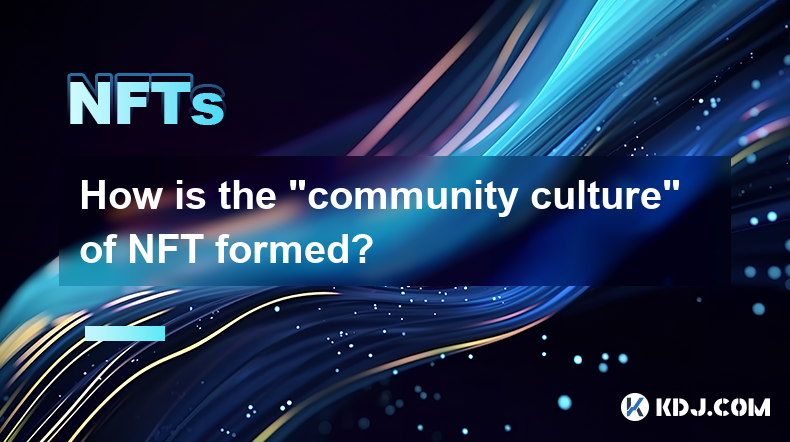
The formation of the "community culture" within the NFT (Non-Fungible Token) space is a fascinating and multi-faceted process. It involves various elements such as shared interests, active engagement, and the creation of a sense of belonging among members. NFT communities often revolve around specific projects or artists, fostering a unique environment where enthusiasts can connect, collaborate, and grow together.
Shared Interests and Values
The foundation of any NFT community culture is built on shared interests and values. These can range from a passion for digital art, gaming, music, or other creative expressions. When individuals with similar interests come together, they naturally form connections and engage in discussions that reinforce their common goals. For instance, fans of a particular artist might gather to discuss their latest NFT releases, share insights, and celebrate new creations. This shared enthusiasm creates a strong bond and a sense of unity within the community.
Active Engagement and Participation
Active engagement is crucial in shaping the culture of an NFT community. Members are encouraged to participate in various activities, such as attending virtual events, joining discussions on social platforms, and contributing to the project's development. Many NFT projects organize regular AMAs (Ask Me Anything) sessions, virtual meetups, and collaborative art projects that keep the community engaged and involved. This level of participation not only strengthens the community's culture but also fosters a sense of ownership and pride among its members.
Creating a Sense of Belonging
A strong sense of belonging is a key element in the formation of NFT community culture. This can be achieved through various means, such as exclusive access to events, special perks for members, and personalized interactions with project creators. For example, some NFT projects offer their community members early access to new releases or the opportunity to vote on future project developments. These initiatives make members feel valued and integral to the project's success, thereby deepening their commitment and loyalty.
Role of Social Platforms
Social platforms play a significant role in shaping the culture of NFT communities. Platforms like Twitter, Discord, and Telegram serve as the primary hubs for communication and interaction among members. These platforms allow for real-time engagement, enabling members to share updates, discuss trends, and build relationships. The use of emojis, memes, and other forms of digital expression further enhances the community's unique culture, creating a fun and vibrant atmosphere that attracts more enthusiasts.
Influence of Project Leaders and Artists
The leaders and artists behind NFT projects have a profound impact on the community culture. Their vision, values, and communication style set the tone for the entire community. Leaders who are transparent, accessible, and genuinely interested in their community's input tend to foster a more positive and collaborative culture. Artists who actively engage with their fans, share their creative process, and respond to feedback create a more intimate and supportive community environment. This interaction not only strengthens the bond between creators and collectors but also encourages a culture of mutual respect and appreciation.
Economic Incentives and Rewards
Economic incentives and rewards also play a crucial role in forming and sustaining NFT community culture. Many projects offer rewards such as airdrops, staking opportunities, and exclusive NFTs to their most active and loyal members. These incentives motivate members to stay engaged and contribute to the community's growth. Additionally, the potential for financial gains through NFT trading and investment can attract a diverse range of participants, further enriching the community's culture with different perspectives and experiences.
The Impact of Events and Collaborations
Events and collaborations are powerful tools in shaping NFT community culture. Special events, such as virtual galleries, auctions, and NFT drops, create excitement and anticipation among members. These events not only provide opportunities for members to acquire unique NFTs but also serve as platforms for networking and building relationships. Collaborations with other artists or projects can introduce new ideas and perspectives, enriching the community's cultural landscape. These initiatives help maintain the community's dynamism and ensure its continued growth and evolution.
The Role of Governance and Decision-Making
Governance and decision-making processes within NFT communities contribute significantly to their culture. Many projects implement decentralized governance models, allowing community members to vote on important decisions and proposals. This democratic approach fosters a culture of inclusivity and empowerment, as members feel they have a say in the project's direction. Transparent and fair governance practices build trust and credibility, which are essential for maintaining a strong and cohesive community culture.
The Importance of Education and Awareness
Education and awareness initiatives are vital for shaping the culture of NFT communities. Projects often provide resources, tutorials, and workshops to help members better understand NFTs, blockchain technology, and the digital art ecosystem. By empowering members with knowledge, projects can create a more informed and engaged community. This educational approach not only enhances the community's culture but also attracts new members who are eager to learn and participate.
The Role of Storytelling and Narrative
Storytelling and narrative are powerful elements in the formation of NFT community culture. Many projects use compelling narratives to engage their members and create a sense of shared purpose. These stories can revolve around the project's origins, its mission, or the personal journeys of its creators. By weaving these narratives into the community's interactions, projects can foster a deeper emotional connection among members. This narrative-driven approach helps create a more immersive and meaningful community culture.
The Influence of Art and Creativity
Art and creativity are at the heart of NFT community culture. The unique and innovative nature of NFTs attracts artists, collectors, and enthusiasts who share a passion for creative expression. The community often celebrates the artistic value of NFTs, discussing their aesthetic qualities, cultural significance, and the stories behind them. This focus on art and creativity fosters a culture of appreciation and inspiration, encouraging members to explore new forms of artistic expression and support emerging artists.
The Role of Technology and Innovation
Technology and innovation are key drivers in the formation of NFT community culture. The use of blockchain technology, smart contracts, and decentralized platforms enables new forms of interaction and collaboration. These technological advancements allow for the creation of unique and dynamic community experiences, such as interactive NFTs, virtual reality galleries, and decentralized marketplaces. By embracing technology and innovation, NFT communities can create a forward-thinking and progressive culture that attracts tech-savvy enthusiasts and innovators.
The Impact of Diversity and Inclusivity
Diversity and inclusivity are essential for a vibrant and thriving NFT community culture. Projects that embrace diversity in terms of artistic styles, cultural backgrounds, and perspectives create a more inclusive and welcoming environment. This diversity enriches the community's cultural landscape, fostering a culture of openness and acceptance. By actively promoting inclusivity, NFT projects can attract a broader audience and ensure that all members feel valued and respected.
The Role of Social Responsibility
Social responsibility plays an increasingly important role in shaping NFT community culture. Many projects are committed to using their platform for positive social impact, such as supporting charitable causes, promoting environmental sustainability, and advocating for social justice. These initiatives resonate with members who share similar values, fostering a culture of social consciousness and responsibility. By aligning their mission with broader social goals, NFT projects can create a community culture that is both meaningful and impactful.
The Influence of Memes and Humor
Memes and humor are integral to the culture of many NFT communities. The use of memes, GIFs, and witty banter creates a lighthearted and fun atmosphere that encourages engagement and interaction. Memes often reflect the community's shared experiences, inside jokes, and cultural references, strengthening the bond among members. This playful and humorous approach to communication helps create a more relaxed and enjoyable community environment, making it easier for new members to feel at home.
The Role of Branding and Identity
Branding and identity are crucial in shaping the culture of NFT communities. A strong and consistent brand identity helps create a sense of unity and belonging among members. This can be achieved through the use of distinctive logos, color schemes, and visual elements that reflect the project's values and mission. A well-defined brand identity not only helps the community stand out in the crowded NFT space but also fosters a deeper emotional connection among members. By investing in branding and identity, NFT projects can create a more cohesive and recognizable community culture.
The Impact of Community Governance Tools
Community governance tools play a significant role in shaping NFT community culture. Platforms like Snapshot and DAOhaus enable decentralized decision-making, allowing community members to propose and vote on important decisions. These tools foster a culture of transparency, accountability, and participation, as members feel empowered to contribute to the project's governance. By leveraging community governance tools, NFT projects can create a more democratic and inclusive community culture that values the input and engagement of its members.
The Role of Mentorship and Support
Mentorship and support are vital components of NFT community culture. Experienced members often take on the role of mentors, guiding newcomers through the complexities of NFTs, blockchain technology, and the digital art ecosystem. This mentorship fosters a culture of learning and growth, as new members gain the knowledge and confidence to participate more actively in the community. By providing support and resources, NFT projects can create a more welcoming and supportive community environment that encourages continuous learning and development.
The Impact of Gamification and Rewards
Gamification and rewards are effective strategies for shaping NFT community culture. Many projects incorporate gamified elements, such as leaderboards, challenges, and achievement badges, to encourage engagement and participation. These gamified experiences create a sense of fun and competition, motivating members to stay active and contribute to the community's growth. Additionally, rewards such as exclusive NFTs, airdrops, and staking opportunities provide tangible incentives for members to remain engaged. By leveraging gamification and rewards, NFT projects can create a more dynamic and engaging community culture.
The Role of Networking and Collaboration
Networking and collaboration are essential for fostering a strong NFT community culture. Members often collaborate on projects, share resources, and support each other's initiatives, creating a culture of mutual support and cooperation. Networking events, such as virtual conferences and meetups, provide opportunities for members to connect and build relationships. These collaborative efforts not only enhance the community's cultural landscape but also drive innovation and creativity. By encouraging networking and collaboration, NFT projects can create a more interconnected and supportive community culture.
The Impact of User-Generated Content
User-generated content plays a significant role in shaping NFT community culture. Members often create and share their own content, such as artwork, videos, and blog posts, contributing to the community's cultural narrative. This user-generated content reflects the community's creativity, diversity, and shared experiences, fostering a sense of ownership and pride among members. By encouraging and celebrating user-generated content, NFT projects can create a more vibrant and participatory community culture that values the contributions of its members.
The Role of Transparency and Trust
Transparency and trust are fundamental to the culture of NFT communities. Projects that maintain open communication, share regular updates, and address community concerns in a timely manner foster a culture of trust and credibility. This transparency helps build a strong and loyal community, as members feel confident in the project's integrity and commitment to their interests. By prioritizing transparency and trust, NFT projects can create a more reliable and supportive community culture that encourages long-term engagement and loyalty.
The Impact of Community Feedback and Iteration
Community feedback and iteration are crucial for shaping and evolving NFT community culture. Projects that actively seek and incorporate community feedback demonstrate a commitment to continuous improvement and responsiveness. This iterative approach fosters a culture of adaptability and innovation, as the community's input directly influences the project's development and direction. By valuing and acting on community feedback, NFT projects can create a more dynamic and responsive community culture that meets the evolving needs and expectations of its members.
The Role of Inclusivity and Accessibility
Inclusivity and accessibility are essential for creating a welcoming and diverse NFT community culture. Projects that prioritize inclusivity by offering resources in multiple languages, accommodating different time zones, and ensuring accessibility for all members create a more inclusive and welcoming environment. This approach fosters a culture of diversity and acceptance, attracting a broader range of participants and enriching the community's cultural landscape. By focusing on inclusivity and accessibility, NFT projects can create a more vibrant and inclusive community culture that values and supports all its members.
Frequently Asked Questions
Q: What are the key elements that contribute to the formation of NFT community culture?
A: Key elements include shared interests and values, active engagement and participation, a sense of belonging, the influence of social platforms, the role of project leaders and artists, economic incentives and rewards, events and collaborations, governance and decision-making, education and awareness, storytelling and narrative, art and creativity, technology and innovation, diversity and inclusivity, social responsibility, memes and humor, branding and identity, community governance tools, mentorship and support, gamification and rewards, networking and collaboration, user-generated content, transparency and trust, and community feedback and iteration.
Q: How do social platforms contribute to NFT community culture?
A: Social platforms like Twitter, Discord, and Telegram serve as primary hubs for communication and interaction within NFT communities. They enable real-time engagement, allowing members to share updates, discuss trends, and build relationships. The use of emojis, memes, and other forms of digital expression enhances the community's unique culture, creating a fun and vibrant atmosphere that attracts more enthusiasts.
Q: What role do project leaders and artists play in shaping NFT community culture?
A: Project leaders and artists set the tone for the entire community through their vision, values, and communication style. Leaders who are transparent, accessible, and genuinely interested in community input foster a positive and collaborative culture. Artists who engage with their fans, share their creative process, and respond to feedback create a more intimate and supportive environment, strengthening the bond between creators and collectors.
Q: How do economic incentives and rewards influence NFT community culture?
A: Economic incentives and rewards, such as airdrops, staking opportunities, and exclusive NFTs, motivate members to stay engaged and contribute to the community's growth. The potential for financial gains through NFT trading and investment attracts a diverse range of participants, enriching the community's culture with different perspectives and experiences.
Q: What is the impact of events and collaborations on NFT community culture?
A: Events and collaborations create excitement and anticipation among members, providing opportunities for networking and building relationships. Special events like virtual galleries, auctions, and NFT drops not only allow members to acquire unique NFTs but also serve as platforms for community engagement. Collaborations with other artists or projects introduce new ideas and perspectives, enriching the community's cultural landscape.
Q: How does governance and decision-making contribute to NFT community culture?
A: Governance and decision-making processes, especially decentralized models, foster a culture of inclusivity and empowerment. Allowing community members to vote on important decisions and proposals builds trust and credibility, creating a more democratic and inclusive community culture where members feel they have a say in the project's direction.
Q: What role does education and awareness play in shaping NFT community culture?
A: Education and awareness initiatives help members better understand NFTs, blockchain technology, and the digital art ecosystem. By empowering members with knowledge, projects create a more informed and engaged community. This educational approach enhances the community's culture and attracts new members eager to learn and participate.
Q: How does storytelling and narrative influence NFT community culture?
A: Storytelling and narrative engage members and create a sense of shared purpose. Compelling narratives about the project's origins, mission, or the personal journeys of its creators foster a deeper emotional connection among members. This narrative-driven approach helps create a more immersive and meaningful community culture.
Q: What is the role of art and creativity in NFT community culture?
A: Art and creativity are central to NFT community culture, attracting artists, collectors, and enthusiasts who share a passion for creative expression. The community often celebrates the artistic value of NFTs, discussing their aesthetic qualities, cultural significance, and the stories behind them. This focus fosters a culture of appreciation and inspiration.
Q: How do technology and innovation contribute to NFT community culture?
A: Technology and innovation, such as blockchain, smart contracts, and decentralized platforms, enable new forms of interaction and collaboration. These advancements create unique and dynamic community experiences, fostering a forward-thinking and progressive culture that attracts tech-savvy enthusiasts and innovators.
Disclaimer:info@kdj.com
The information provided is not trading advice. kdj.com does not assume any responsibility for any investments made based on the information provided in this article. Cryptocurrencies are highly volatile and it is highly recommended that you invest with caution after thorough research!
If you believe that the content used on this website infringes your copyright, please contact us immediately (info@kdj.com) and we will delete it promptly.
- "Cardano (ADA) Price Could Dip Below $0.60, Following Previous Market Cycle"
- 2025-04-09 05:10:12
- BONK, the well-known meme coin, has risen over 35% in the last week, attracting meme coin investors in the market. So, what caused this rally?
- 2025-04-09 05:10:12
- Bitcoin (BTC) Investors May Not Exactly Feel It, but BTC Has Been a Relatively Good Bet
- 2025-04-09 05:05:12
- Donald's Bitcoin (DONBTC) Could Turn Early Investors into Multi-Millionaires, Like Shiba Inu (SHIB) and Dogecoin (DOGE) Did
- 2025-04-09 05:05:12
- 6 Upcoming Kraken Listings That Could Be the Next Big Thing in Crypto
- 2025-04-09 05:00:13
- COTI Unveils New Privacy-Focused Blockchain to Reshape Web3 Transactions
- 2025-04-09 05:00:13
Related knowledge
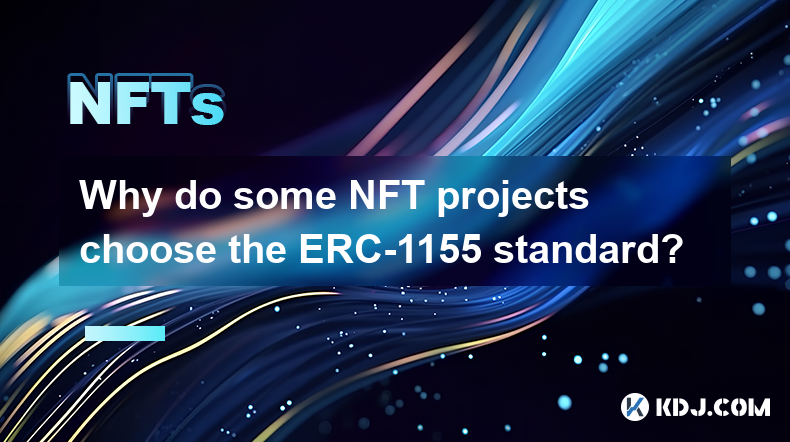
Why do some NFT projects choose the ERC-1155 standard?
Apr 08,2025 at 11:49am
The world of Non-Fungible Tokens (NFTs) has seen a significant rise in popularity and innovation, leading to the development of various token standards. Among these, the ERC-1155 standard has emerged as a versatile and efficient choice for many NFT projects. This article delves into the reasons why some NFT projects opt for the ERC-1155 standard, explor...
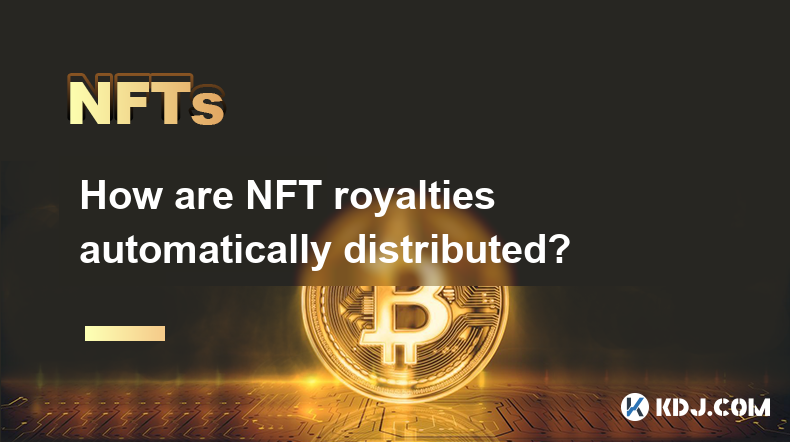
How are NFT royalties automatically distributed?
Apr 08,2025 at 08:14pm
NFTs, or Non-Fungible Tokens, have revolutionized the digital art and collectibles market by providing a way to prove ownership and authenticity of digital assets. One of the most intriguing features of NFTs is the ability to automatically distribute royalties to creators whenever their work is resold. This article will delve into the mechanisms behind ...
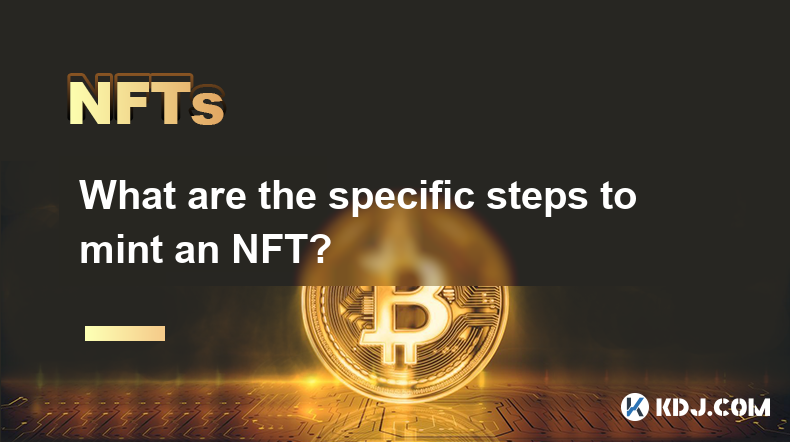
What are the specific steps to mint an NFT?
Apr 08,2025 at 05:22pm
Introduction to NFT MintingMinting an NFT, or Non-Fungible Token, involves creating a unique digital asset on a blockchain. This process allows artists, creators, and collectors to tokenize their work, ensuring its authenticity and ownership. Understanding the steps to mint an NFT is crucial for anyone looking to enter the world of digital collectibles....
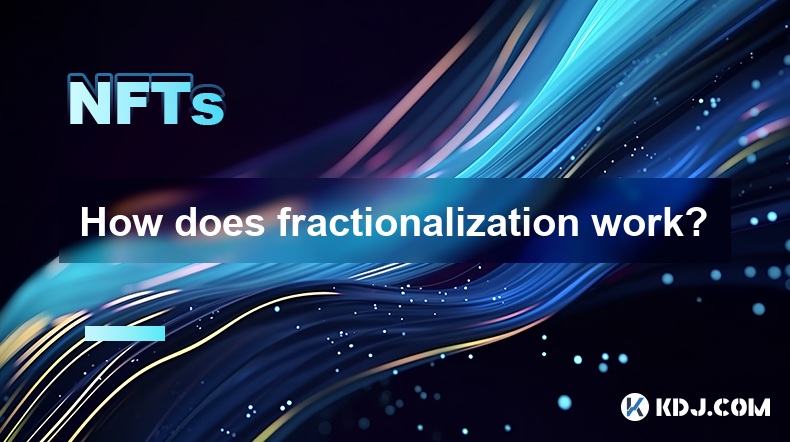
How does fractionalization work?
Apr 08,2025 at 07:42pm
How does fractionalization work? Fractionalization in the context of cryptocurrencies and blockchain technology refers to the process of dividing a single asset into smaller, more manageable pieces. This concept has revolutionized the way investors and users interact with high-value assets, making them more accessible and liquid. In this article, we wil...
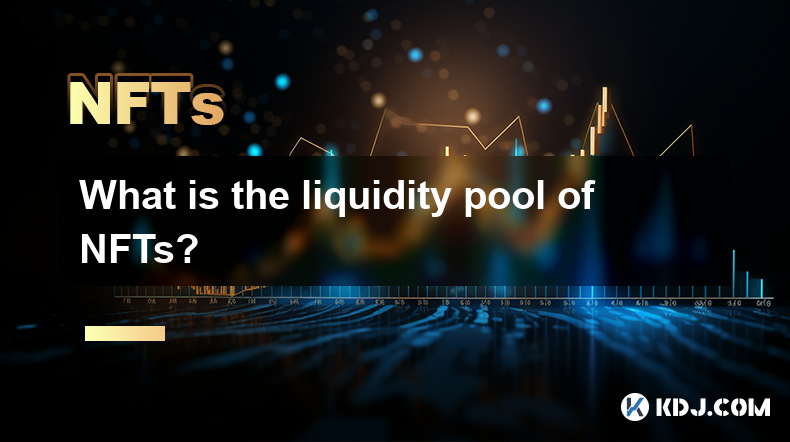
What is the liquidity pool of NFTs?
Apr 08,2025 at 05:35pm
The concept of liquidity pools has become increasingly popular within the cryptocurrency and decentralized finance (DeFi) ecosystems. While traditionally associated with token swaps, the idea has extended to the realm of Non-Fungible Tokens (NFTs). Liquidity pools for NFTs are mechanisms that facilitate the trading and exchange of these unique digital a...

What are the common ways to participate in the NFT whitelist?
Apr 08,2025 at 08:28pm
Participating in an NFT whitelist can be an exciting opportunity for enthusiasts and investors looking to secure their spot in upcoming NFT drops. The whitelist often grants early access or special privileges, such as lower minting fees or guaranteed allocations. Here, we will explore the common ways to participate in an NFT whitelist, detailing each me...

Why do some NFT projects choose the ERC-1155 standard?
Apr 08,2025 at 11:49am
The world of Non-Fungible Tokens (NFTs) has seen a significant rise in popularity and innovation, leading to the development of various token standards. Among these, the ERC-1155 standard has emerged as a versatile and efficient choice for many NFT projects. This article delves into the reasons why some NFT projects opt for the ERC-1155 standard, explor...

How are NFT royalties automatically distributed?
Apr 08,2025 at 08:14pm
NFTs, or Non-Fungible Tokens, have revolutionized the digital art and collectibles market by providing a way to prove ownership and authenticity of digital assets. One of the most intriguing features of NFTs is the ability to automatically distribute royalties to creators whenever their work is resold. This article will delve into the mechanisms behind ...

What are the specific steps to mint an NFT?
Apr 08,2025 at 05:22pm
Introduction to NFT MintingMinting an NFT, or Non-Fungible Token, involves creating a unique digital asset on a blockchain. This process allows artists, creators, and collectors to tokenize their work, ensuring its authenticity and ownership. Understanding the steps to mint an NFT is crucial for anyone looking to enter the world of digital collectibles....

How does fractionalization work?
Apr 08,2025 at 07:42pm
How does fractionalization work? Fractionalization in the context of cryptocurrencies and blockchain technology refers to the process of dividing a single asset into smaller, more manageable pieces. This concept has revolutionized the way investors and users interact with high-value assets, making them more accessible and liquid. In this article, we wil...

What is the liquidity pool of NFTs?
Apr 08,2025 at 05:35pm
The concept of liquidity pools has become increasingly popular within the cryptocurrency and decentralized finance (DeFi) ecosystems. While traditionally associated with token swaps, the idea has extended to the realm of Non-Fungible Tokens (NFTs). Liquidity pools for NFTs are mechanisms that facilitate the trading and exchange of these unique digital a...

What are the common ways to participate in the NFT whitelist?
Apr 08,2025 at 08:28pm
Participating in an NFT whitelist can be an exciting opportunity for enthusiasts and investors looking to secure their spot in upcoming NFT drops. The whitelist often grants early access or special privileges, such as lower minting fees or guaranteed allocations. Here, we will explore the common ways to participate in an NFT whitelist, detailing each me...
See all articles






















































































